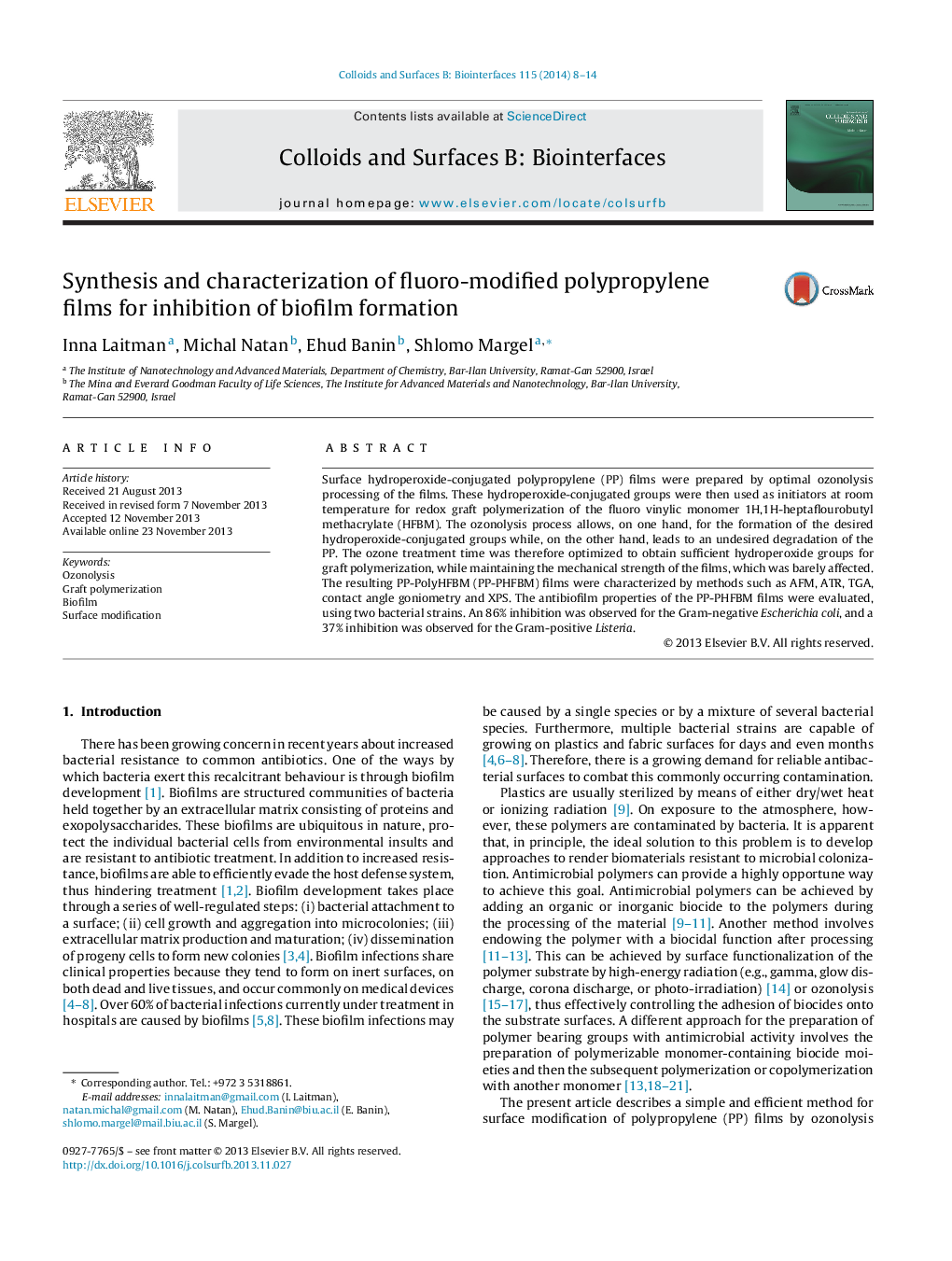| Article ID | Journal | Published Year | Pages | File Type |
|---|---|---|---|---|
| 599704 | Colloids and Surfaces B: Biointerfaces | 2014 | 7 Pages |
Abstract
Surface hydroperoxide-conjugated polypropylene (PP) films were prepared by optimal ozonolysis processing of the films. These hydroperoxide-conjugated groups were then used as initiators at room temperature for redox graft polymerization of the fluoro vinylic monomer 1H,1H-heptaflourobutyl methacrylate (HFBM). The ozonolysis process allows, on one hand, for the formation of the desired hydroperoxide-conjugated groups while, on the other hand, leads to an undesired degradation of the PP. The ozone treatment time was therefore optimized to obtain sufficient hydroperoxide groups for graft polymerization, while maintaining the mechanical strength of the films, which was barely affected. The resulting PP-PolyHFBM (PP-PHFBM) films were characterized by methods such as AFM, ATR, TGA, contact angle goniometry and XPS. The antibiofilm properties of the PP-PHFBM films were evaluated, using two bacterial strains. An 86% inhibition was observed for the Gram-negative Escherichia coli, and a 37% inhibition was observed for the Gram-positive Listeria.
Related Topics
Physical Sciences and Engineering
Chemical Engineering
Colloid and Surface Chemistry
Authors
Inna Laitman, Michal Natan, Ehud Banin, Shlomo Margel,
